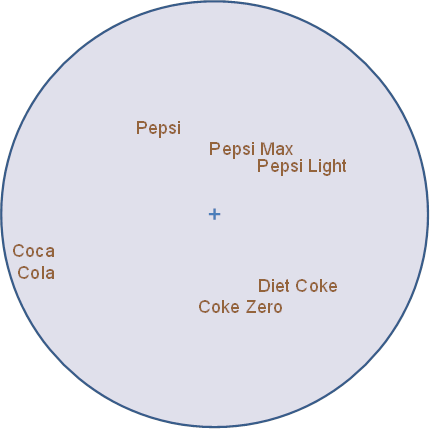Multidimensional Scaling (MDS)
Multidimensional Scaling (MDS) can be conducted in Q by:
- Using the Maps dialog box.
- Table JavaScript and Plot JavaScript (i.e., by writing your own code).
- Using R
This page only describes MDS as generated using Maps
Required data
Multidimensional scaling requires a Number - Multi question to be selected in the blue drop-down menu and RAW DATA in the brown drop-down menu. If data is not a distance matrix, Q automatically converts it into a distance matrix (this is discussed in more detail below).
Interpretation
The closer two variables are on a map, the more similar their data. Figure 90 shows an MDS chart based on six attitudinal variables, each measuring how much people like six brands of cola (Hate to Love). We can see from the chart that Coca-Cola is relatively isolated, whereas Diet Coke and Coke Zero have, relatively, similar ratings (i.e., people that like one are more likely to like another) and, similarly, the Pepsi brands cluster together, with Pepsi closest to Coca-Cola and the diet Pepsis closes to the diet Coke brands.
Technical details
Classic (metric) multidimensional scaling of the distance matrix (see Torgerson, W. S. (1958). Theory and Methods of Scaling. New York: Wiley).
Distances are computed between the mth and pth variable using:
